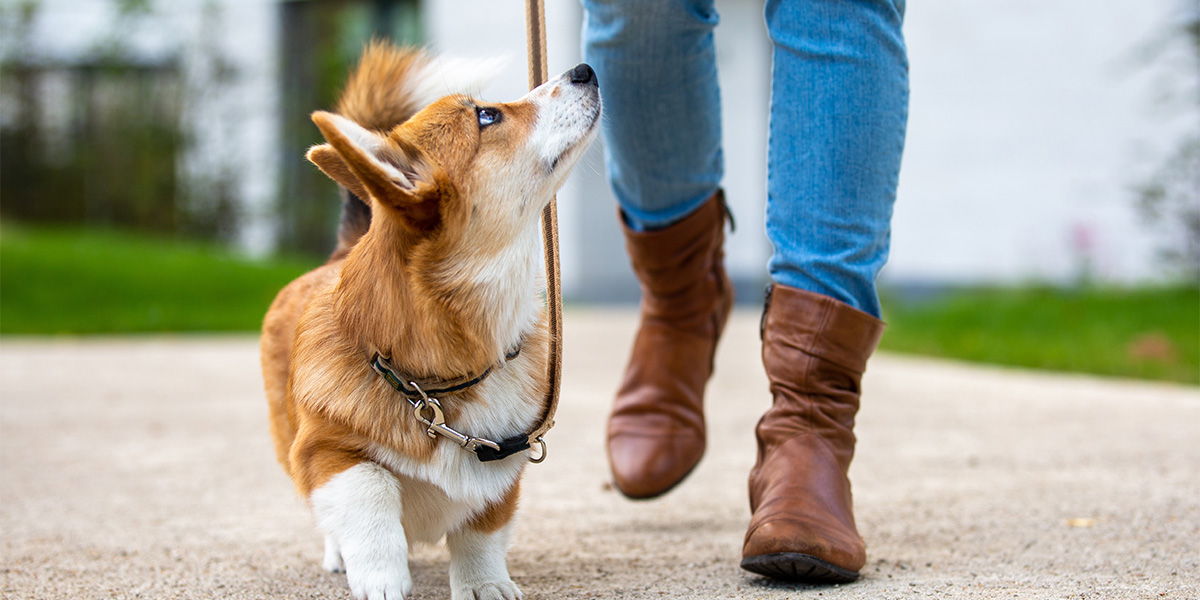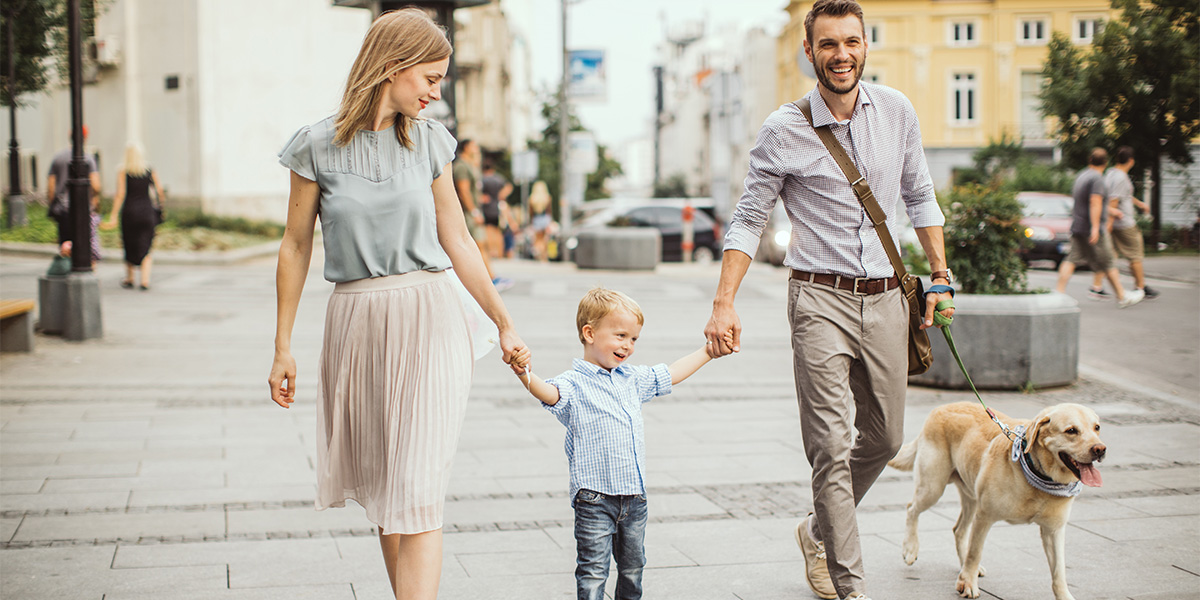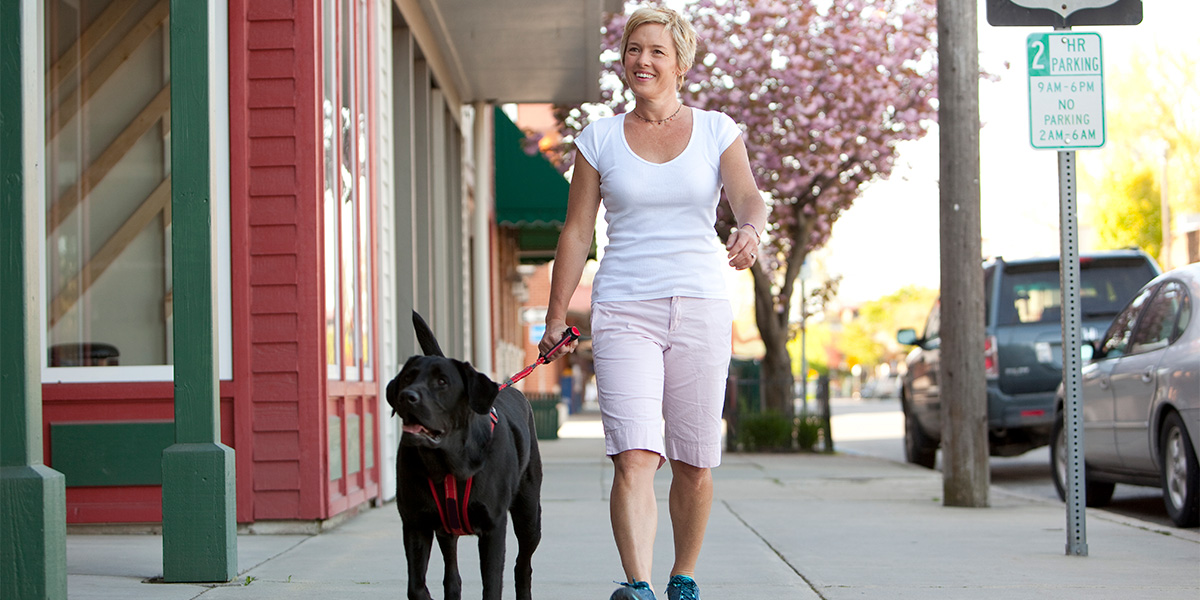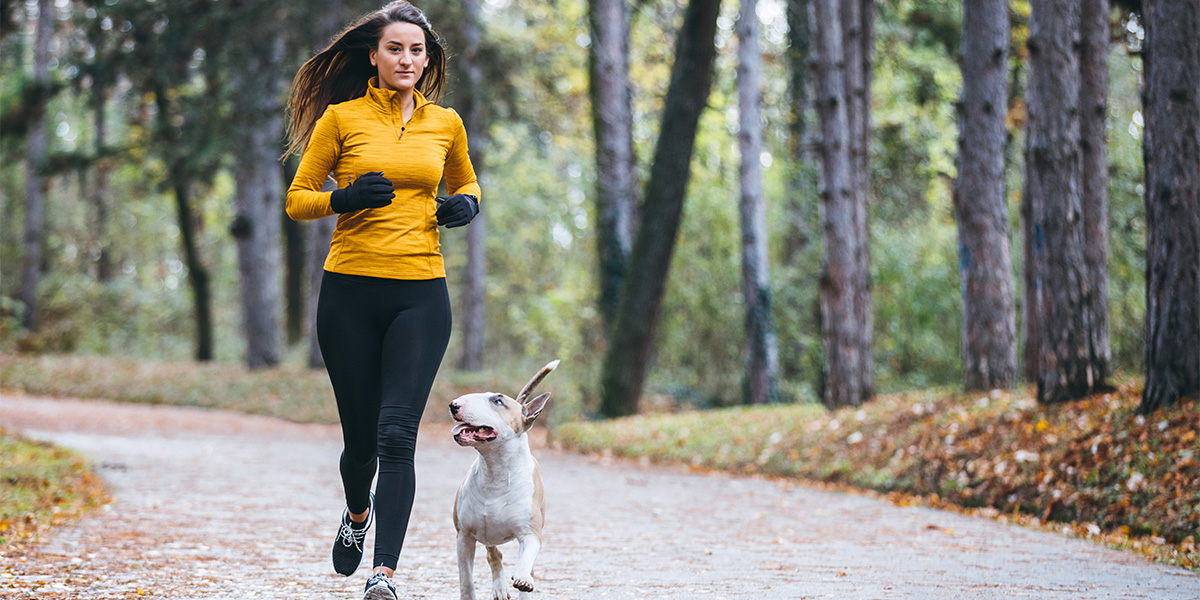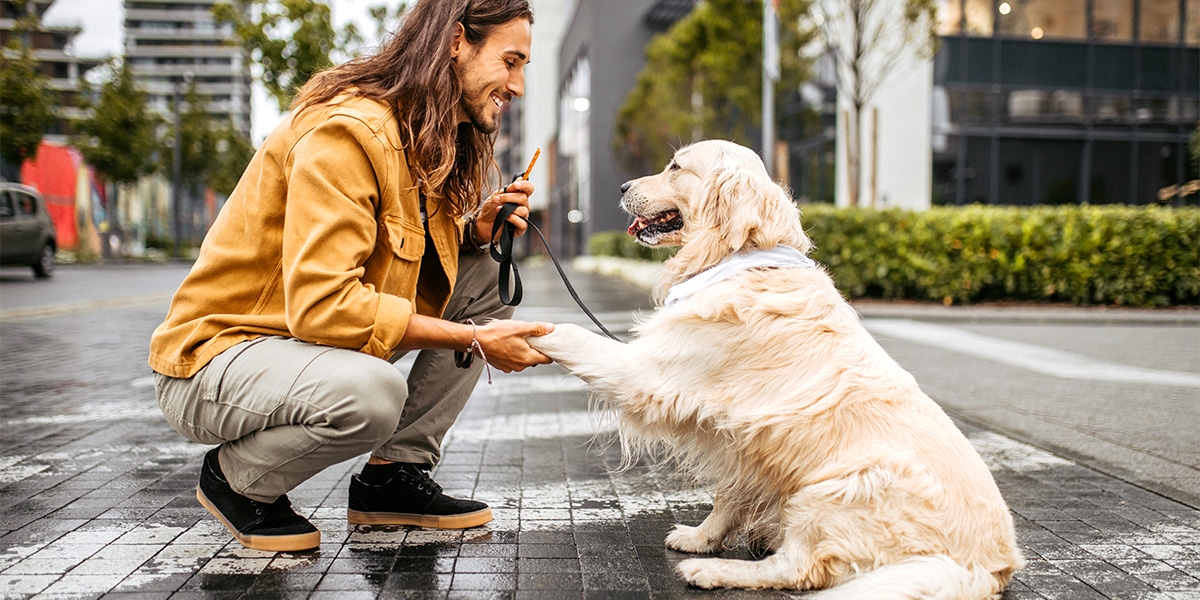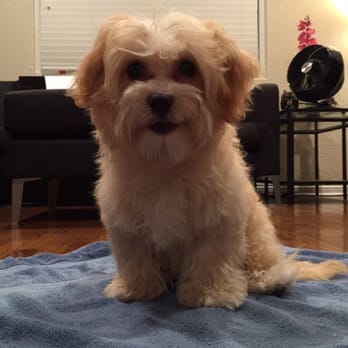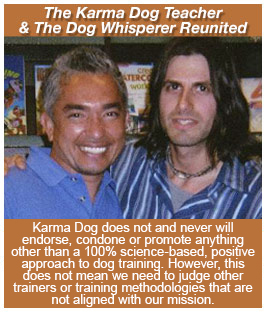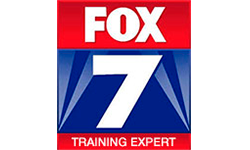Public Manners (Part 1 & 2)
A gentle, effective, and enlightened approach to dog training
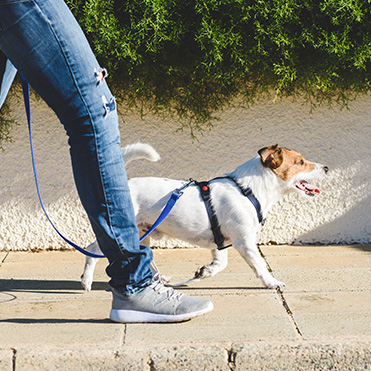
Properly training your dog in public opens up a world of freedom for your dog and gives you the peace of mind knowing that your dog will be a welcomed family member wherever you go in the real world.
However, we are all different in the way we perceive the world and therefore we must use this understanding as a guide to our communication with others when we take our dogs out in public. For the most part, responsible dog parents can agree on 3 central themes.
- SAFETY
A person bringing a dog in public should without any doubt whatsoever have a certain level of influence with their dog in order to keep them safe and other dogs safe. This includes making sure their dog has properly fitted equipment on, from collars to harnesses, and enough education on how to properly handle a dog leash so that no matter what situation they find themselves in, their dog will not pull them so hard that they let go of the leash.
In addition, any person who brings a dog in public should make sure their dog is wearing a name tag (attached to either their collar or harness) with up-to-date contact information with name, phone number and address.
- EDUCATION
A person bringing a dog into public should have a certain amount of education under their belt in order to be able to follow the tacit agreements dog parents rely upon to coexist harmoniously with each other in public. This includes the know-how and the technical ability to walk their dog nicely past another dog without excess pulling and jumping towards another dog, as well as learning proper greetings and introductions with other dogs and people (especially kids), when given permission to do so.
In addition, ideally any person bringing their dog in public should be educated on basic first aid protocols and have a game plan for what to do in an emergency situation. Having a local Veterinary nearby is extremely important.
- RESPECT
A person who takes their dog in public should be respectful of other dog parent’s personal boundaries, as well as the local laws that are in place which exist for everyone’s benefit.
For example, keeping a dog on leash because the leash law requires it or picking up after your dog does their business, is not only respecting the law but it’s simultaneously respecting the rights of other dog parents who want to enjoy their dog walk safely and with peace of mind knowing that their dog walk should go smoothly.
How do we get every dog parent to become a responsible Dog Parent in Public?
PART 1
In Karma Dog Training’s Public Manners (Part 1), one of our Lead Trainers will take your dog in public for a series of individual 90 minute training sessions where our head trainer will work directly with your dog (without you there) and prepare them to walk with you in public following the 3 central themes of Safety, Education and Respect while working towards your Top 3 Goals that you have for your dog’s behavior public behavior.
Your Top 3 Goals will serve as the foundational building blocks for all of your dog's Public Manners.
PART 2
In Karma Dog Training’s Public Manners (Part 2), we will then have you join the public training sessions and begin to teach you and your dog together as a team. It's during these training sessions we will show you everything your dog has learned while transferring the necessary handler education and skill set to you.
Each follow up lesson with you and your dog working together as a team is complementary and comes with each Public Manners program.
We have 3 different Public Manners programs to choose from and a Public Access Test:
Properly training your dog in public opens up a world of freedom for your dog and grants you the peace of mind knowing that your dog will be a welcomed well-mannered family member out and about in the real world. Here is how we achieve this.
Public Manners for Basic Communication Level 1
This is where we teach your dog all of the basic building blocks to good dog behavior such as "watch me", "stay", "down", "leave it", "loose leash walking" and "wait at the curb" before crossing the street.
This program is either 5, 10 or 15 sessions in length and comes with 2 free follow up training sessions with you and your dog working as a team for every 5 Individual training sessions your dog has with our Lead Trainer.
Public Manners for Behavior Modification
This is where we work to mitigate your dog’s problem behavior in all situations which includes but is not limited to pulling towards other dogs and people while on leash, jumping up at other dogs and people, teaching proper introductions and greetings with other dogs and people (and especially kids) as well as “proofing” the behaviors learned in Basic Communication Level 1 behaviors by introducing the 3 D’s - Distance, Duration and Distractions.
This program is either 7, 14 or 21 sessions and comes with 2 free follow up training sessions with you and your dog working as a team for every 7 Individual training sessions your dog has with our Lead Trainer.
Public Manners for Reactivity/Aggression
Having a dog with aggression or severe behavioral issues is serious and needs to be treated as such and with no stone left unturned. For the safety of your dog as well as the safety of all other dogs and people they may interact with, we cover all aspects of potential pitfalls for the reactive dog and work to solve these situations proactively and with a clear intention and an effective strategy.
This program is either 10, 20 or 30 sessions in length and comes with 2 free follow up training sessions with you and your dog working as a team for every 10 Individual training sessions your dog has with our Lead Trainer.
Public Access Test
The purpose of the Karma Dog Public Access Test is to ensure that dogs who are taken in public are stable, well-behaved, and unobtrusive to the public. It is to ensure that the client has control over their dog and the handler/dog team is not a public hazard.
*With regards to our Service Dog program, the Karma Dog Public Access Test is not intended as a substitute for the skill/task test that should be given to Service Dog clients once this test is passed. It is to be used in addition to those skill/task tests.
It is expected that the Karma Dog Public Access Test will be adhered to as closely as possible. If modifications are necessary, it should be noted on the test.
Automatic Fails: Any displays of aggressive behavior, defined as lunging, growling, biting, or showing teeth. Any dog that eliminates in a building. Any dog that shows uncontrollable behavior.
The Karma Dog Public Access Test is in a pass/fail format. If a client is taking this test as part of their Service Dog program, all participants must meet the American Disabilities Act Service animal criteria and pass all of the tests.
Normal method of transit disembark
___pass ___failHandler will unload the dog out of the car, or whichever vehicle is applicable. The dog must wait until released before coming out of the vehicle. Once outside, the dog must wait quietly unless otherwise instructed by the Individual.
Parking lot/public sidewalks
___pass ___failOnce unloaded out of the vehicle, the dog must not display a fear of cars or traffic noises and must display a relaxed attitude through the parking lot. While navigating on sidewalks, the dog must wait at curbs before entering into the street.
Building/public transportation entrance (doors)
___pass ___failThe dog must wait at the entrance to a building/store/public transportation showing a relaxed attitude toward the doors. The team should enter a building without infringing on the customers or patrons who are exiting and entering. Must be tested with two different types of doors
____Door type 1 ____Door type 2Public interior
___pass ___failOnce inside, the dog must stay close to the handler, not pulling, wandering, or foraging. The team will make a right turn, left turn and navigate between crowds. The dog will not interfere or interact with any merchandise.
Leash tension
___pass ___failThroughout the duration of the test, the dog is walking next to and with the handler and does not need leash corrections. No training collars or harnesses are permitted (unless the impairment of the handler permits this). The leash will remain in a loose J position.
Come when called/ dropped leash control
___pass ___failThe handler will drop the leash and quickly walk 20 feet ahead and call the dog to come. The dog will not wander or stray. Once reunited with the handler the dog sits and calmly waits for the leash to be picked up. It is acceptable if the dog follows the handler the entire time.
Sit with 3 distractions.
While being pet
___pass ___failIn the presence of a wheeled distraction
___pass ___failPerson coming up from behind
___pass ___failDown/restaurant
___pass ___failThe team is seated at a restaurant. The dog will be positioned to cause the least obstruction to the flow of business. The dog will lay down and not need repeated reminders. The dog will not illicit attention or food from another individual. The dog ignores food.
Noise distraction
___pass ___failThe tester drops an item such as a clipboard or loud keys to make a startling noise. The dog can show signs of being startled, but may not show any aggression.
Working in presence of another dog
___pass ___failThe dog may show casual interest, but may not say hello, lunge or pull away or bark at another dog.
Working in the presence of children
___pass ___failA child will approach the dog. The dog will remain calm and can lay down on cue when asked to do so in the presence of the child. The child may not taunt or tease the dog.
Elevator
___pass ___failThe team enters the elevator and the dog remains calm and out of the way of the other occupants of the elevator.
Public restroom ___pass ___fail
The team enters the restroom. The dog will follow the handler into the stall and not infringe on any other individuals’ privacy. When washing hands, the dog remains in a sit or down stay until the handler can return to hold the leash.
Surfaces
___pass ___failThe dog should walk over a variety of surfaces and does not stop or refuse to walk when flooring changes. There should be no abnormal reaction when the dog crosses different types of surfaces.
SCHEDULE YOUR FREE 10 MINUTE
ZOOM, FACETIME, GOOGLE DUO, SKYPE,
OR PHONE CONSULTATION
Schedule Now
Contact UsEmily Ozrey
Director, Karma Dog Training
Director, Karma Dog Training




